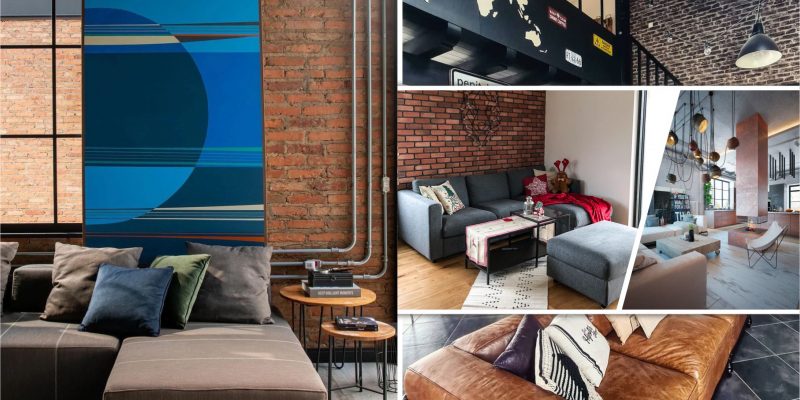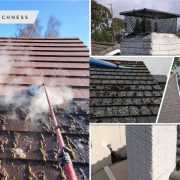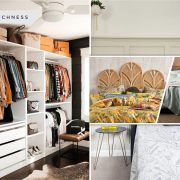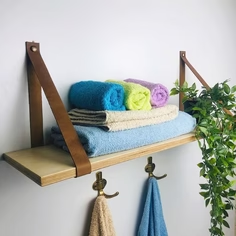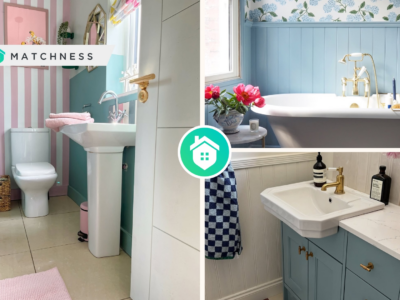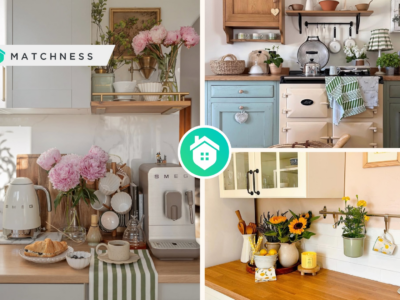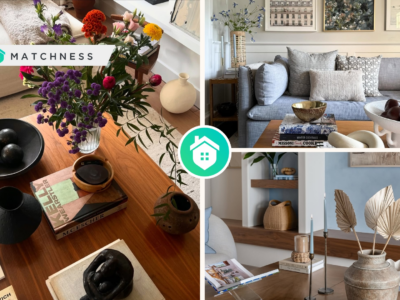Often seen in upscale homes and commercial spaces, industrial interior design is one of the most popular styles today. It’s a unique aesthetic that looks raw and unfinished but exudes character and charm.
It is based on practical elements, such as brick, concrete, and metal. However, this style can become too harsh when paired with hard-edged materials, so it’s important to add softness and warmth to your space. Therefore, you need to pay attention to the essential elements to create industrial interior designs.
When it comes to creating an industrial interior design, there are many essential elements that must be considered. These include material, fixtures, color, and texture. Let’s take a look at these elements below.
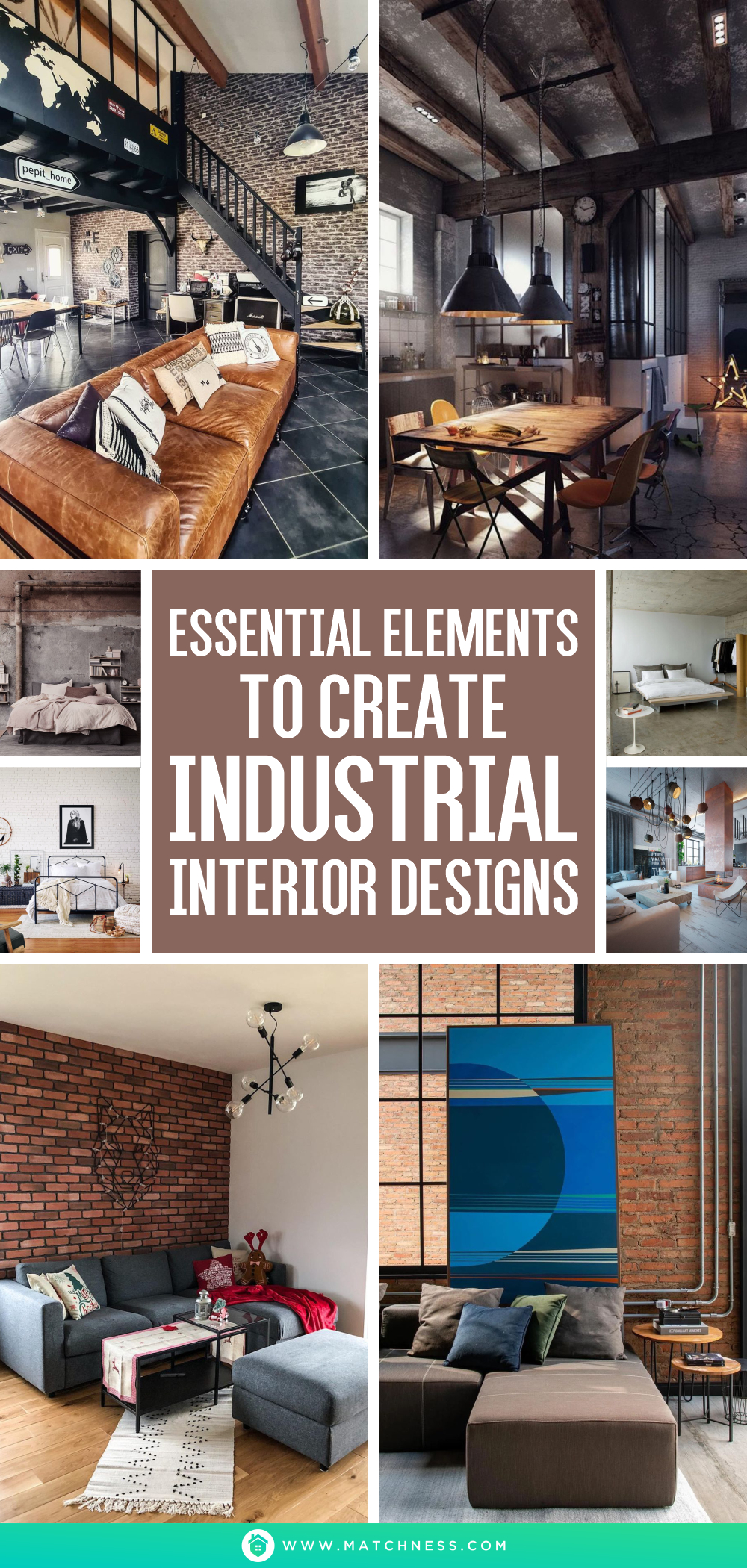
Material
When creating industrial interior designs, you want to be sure to choose materials that will stand up to a lot of use and wear. These materials are often incredibly durable, and they’re also resistant to scratches and stains. Those materials may include concrete, metals, bricks and more. They’re a great way to add texture and character to your space, as well as keep your home looking stylish for years to come.
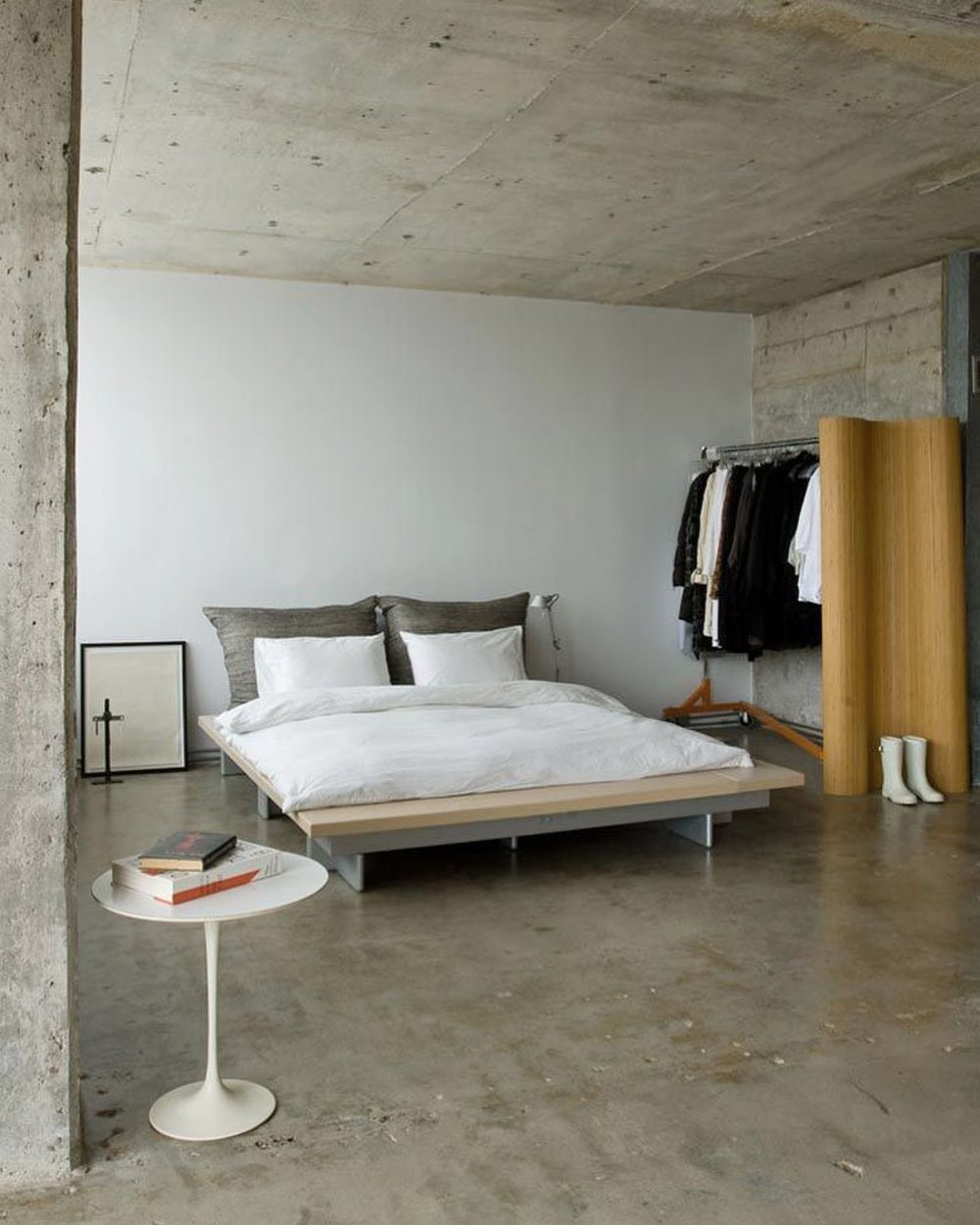
Using concrete material on the ceiling of this bedroom will create a solid and inviting appearance. This design lends itself to an industrial rustic style for a stunning result.Industrial Ceiling Concrete from @_homespiration_
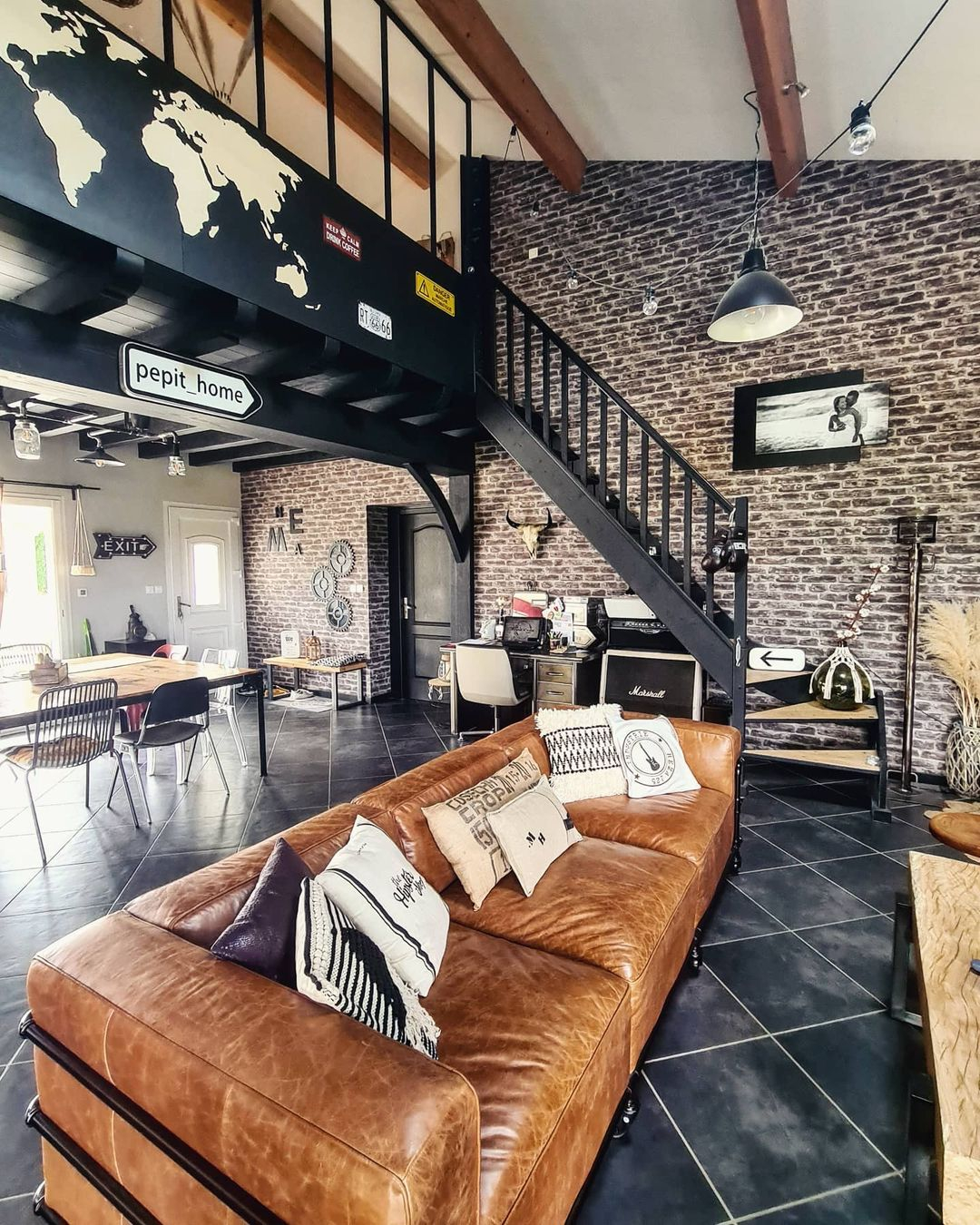
The metal and brick accents on this industrial wall provide a charming design for you to try. Applying these decorations to an industrial-style home will give it a trendy and inviting look. Brick and Metal Industrial Decor from @pepit_home
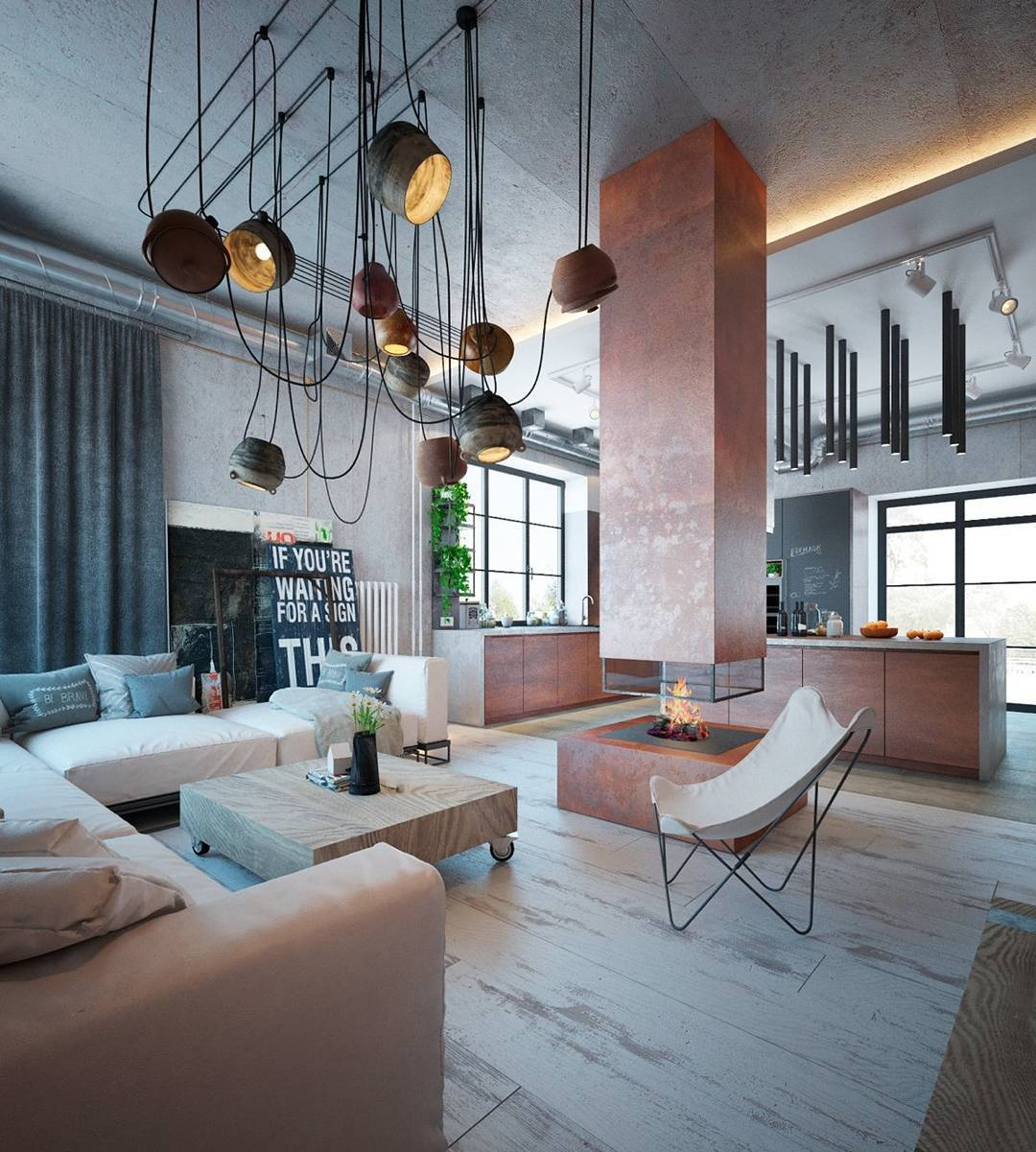
The metal accents of this fireplace give it a chic industrial concept. Placing a fireplace in the middle of this open space manages to provide the perfect focal point. Metal Fireplace from @iamsummerjames

Who says industrial style can’t be combined with rustic? Look! The backsplash of this bick will create a solid and inviting rustic industrial look. Industrial Brick Backsplash from @stepbystep.home
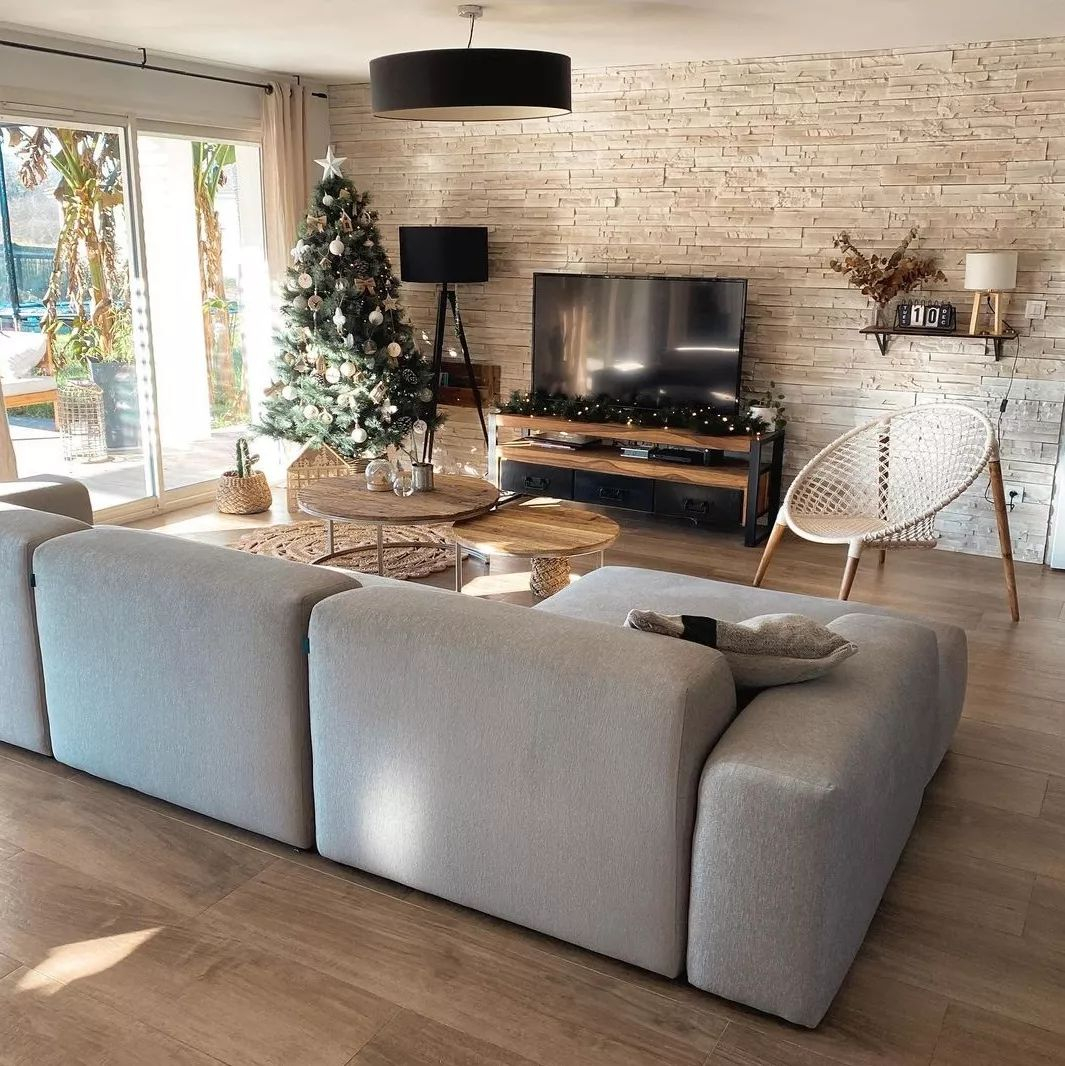
This industrial living room is equipped with a brick accent wall that will give a sturdy and unique impression. Combined with the metal accents on the chandeliers and pendants this will balance out your industrial look. Eposed Brick Wall from @stepbystep.home
Color
When creating an industrial interior design, the colors you choose play a vital role. You want to avoid overpowering or oversaturated shades that might overwhelm the space. You can opt for neutral tones of blacks, grays, whites, and browns to give the entire design an earthy feel.
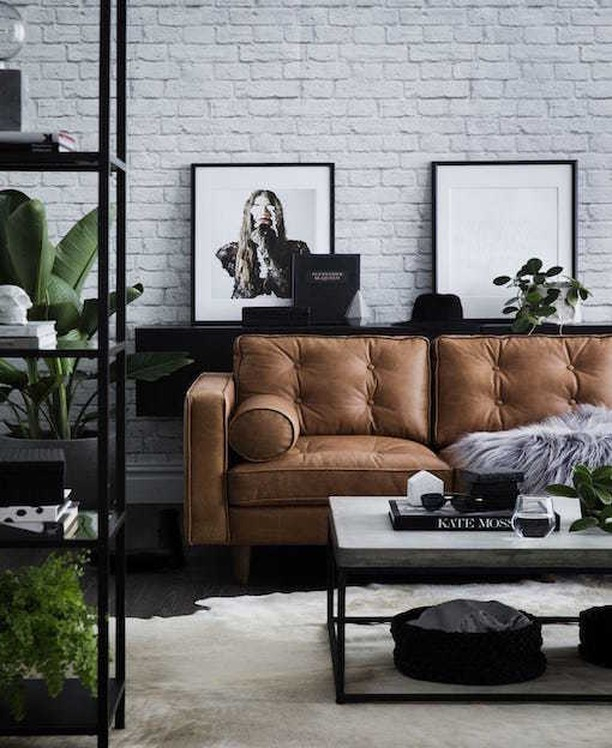
Industrial house design with a white color scheme on brick walls adds a bright impression to the whole room. Combining this with a leather sofa will also give it a perfect industrial look and a charming design.White Brick Wall from @princedesignau
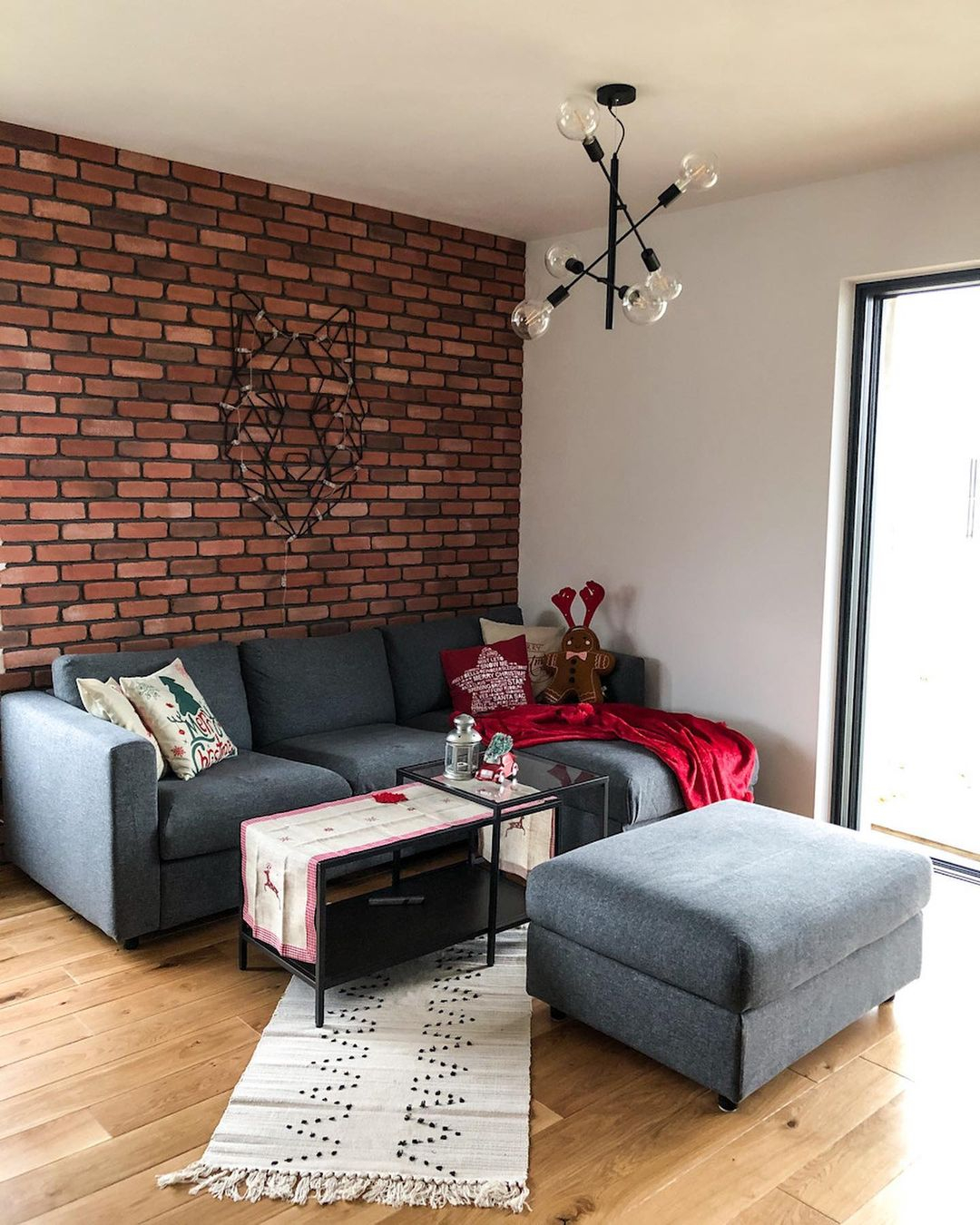
This mix of white paint and brick walls adds an eye-catching look to your industrial living room. Wooden floors will also neutralize the room and produce the perfect décor. White Paint and Brick Wall from @zyciowiamatorzy
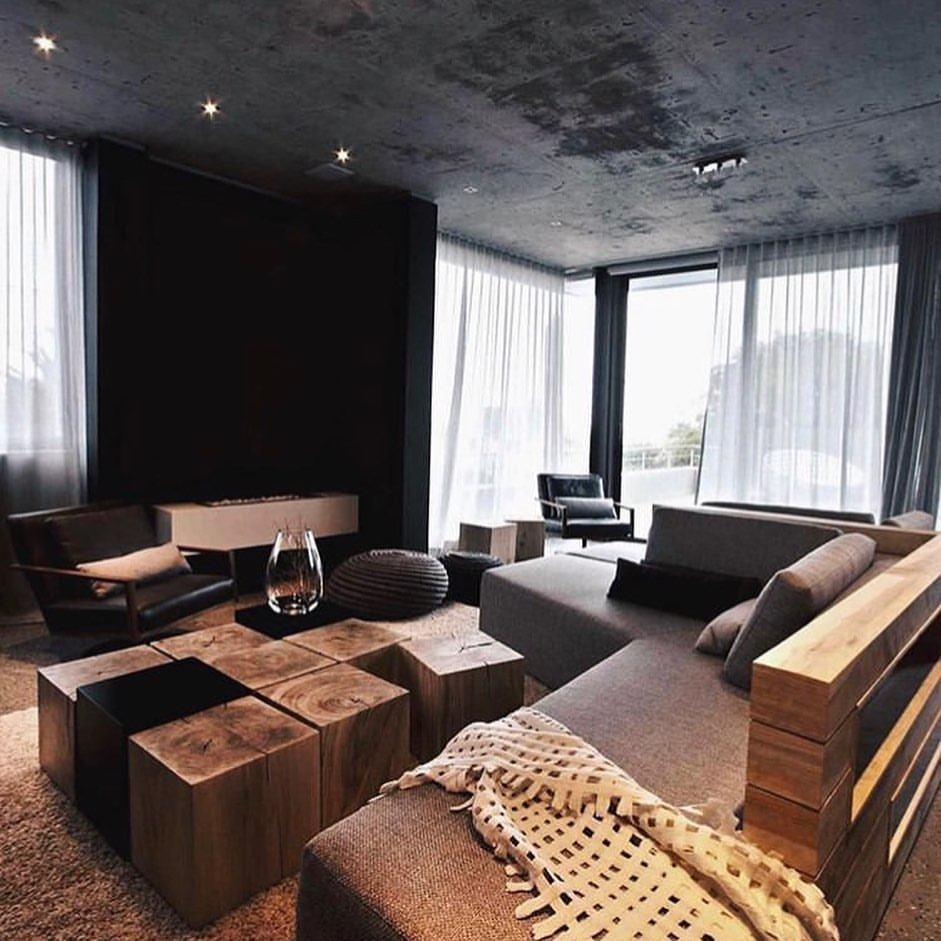
The black color scheme in this industrial living room design adds a chic look and an attractive design for you to try in the current era. This wooden cube coffee table will also result in a perfect living room decoration and center of attention. Black Color Scheme from @homeasy.design
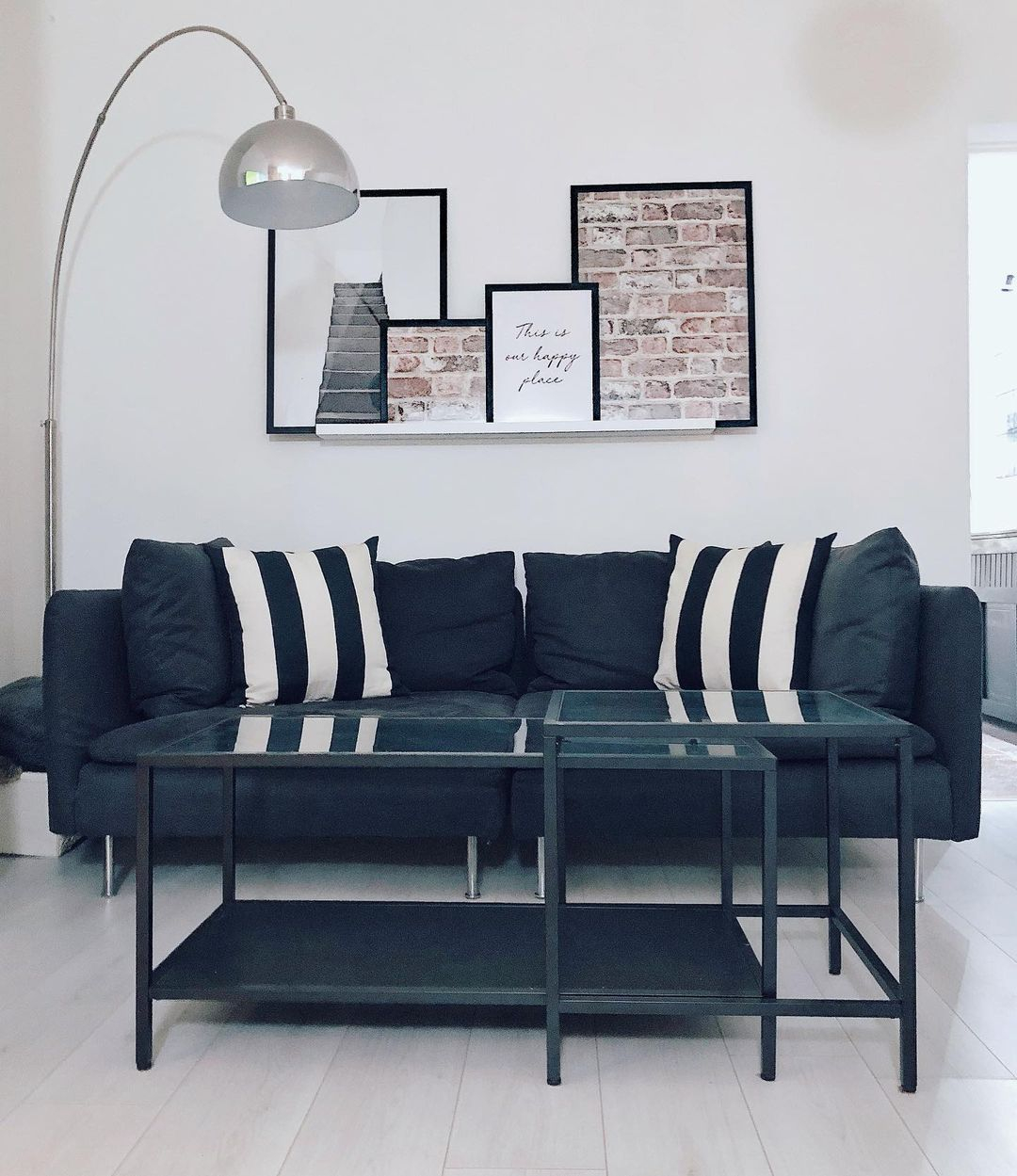
The black and white color scheme in this industrial living room adds a beautiful and bright impression. This black sofa and black coffee table will also balance the look of this room. Black and White Industrial Design from @marta_kop_home
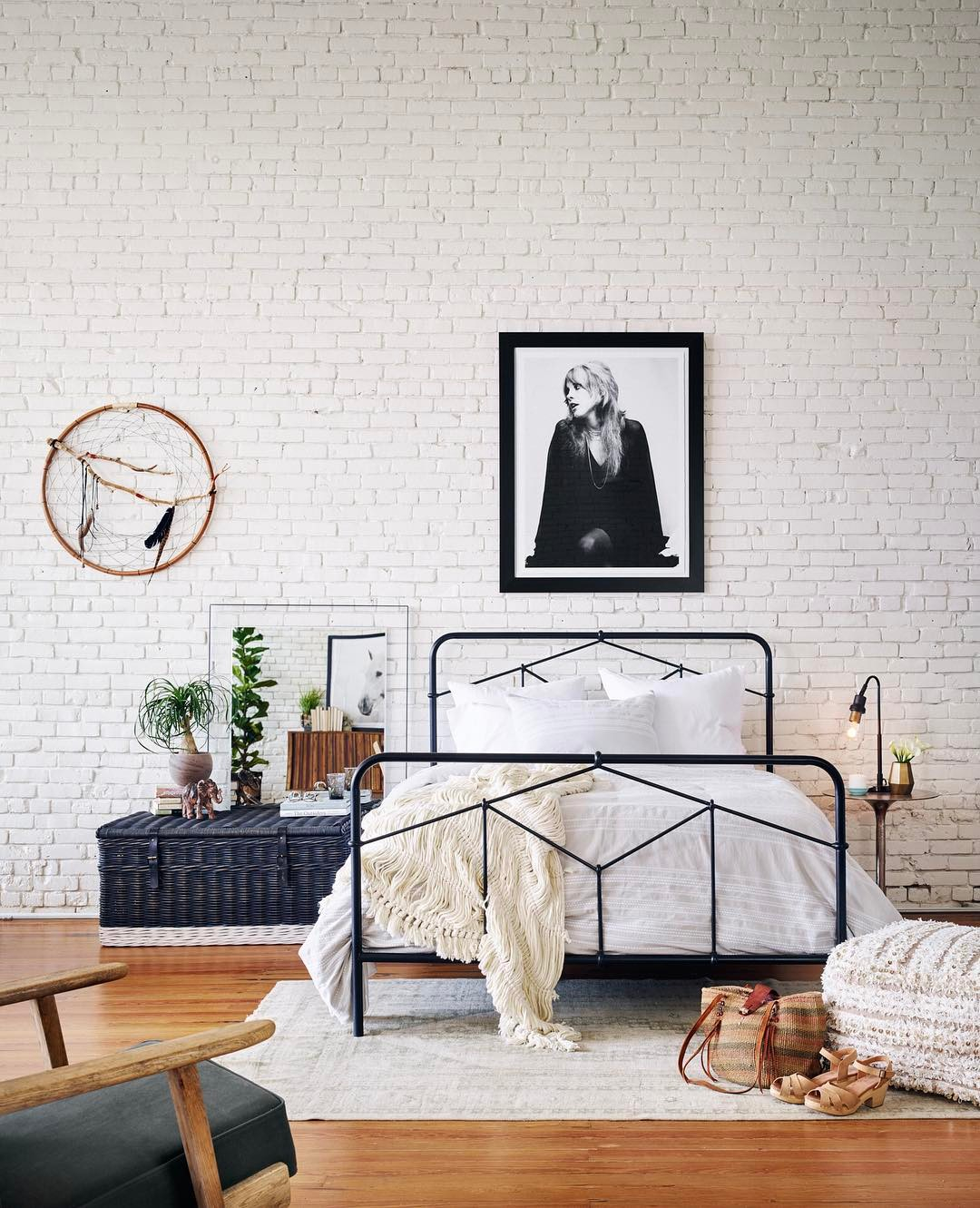
This bedroom monochrome changes the attractive appearance and different design. White brick walls combined with black furniture accents balance the look. Monochrome Industrial Bedroom from @industrialhomeinc
Exposed pipes
Exposed pipes are a popular choice for industrial design spaces. They evoke the unfinished character of factories. They can also be used to create interesting patterns. You can use bends and joints on exposed pipes to create a unique design. The simplest way to add these elements to your home is by painting them in a color that compliments the wall. However, it may be more appealing to leave them exposed so that they look more natural and add a sense of edgy character to the room.

Flaunting exposed pipes The easiest way to add an industrial feel to this home. However, it’s more fun to leave it open so it looks more natural and adds an edgier feel to the room. Ceiling Pipe Industrial Design from @vintageindustrialstyle
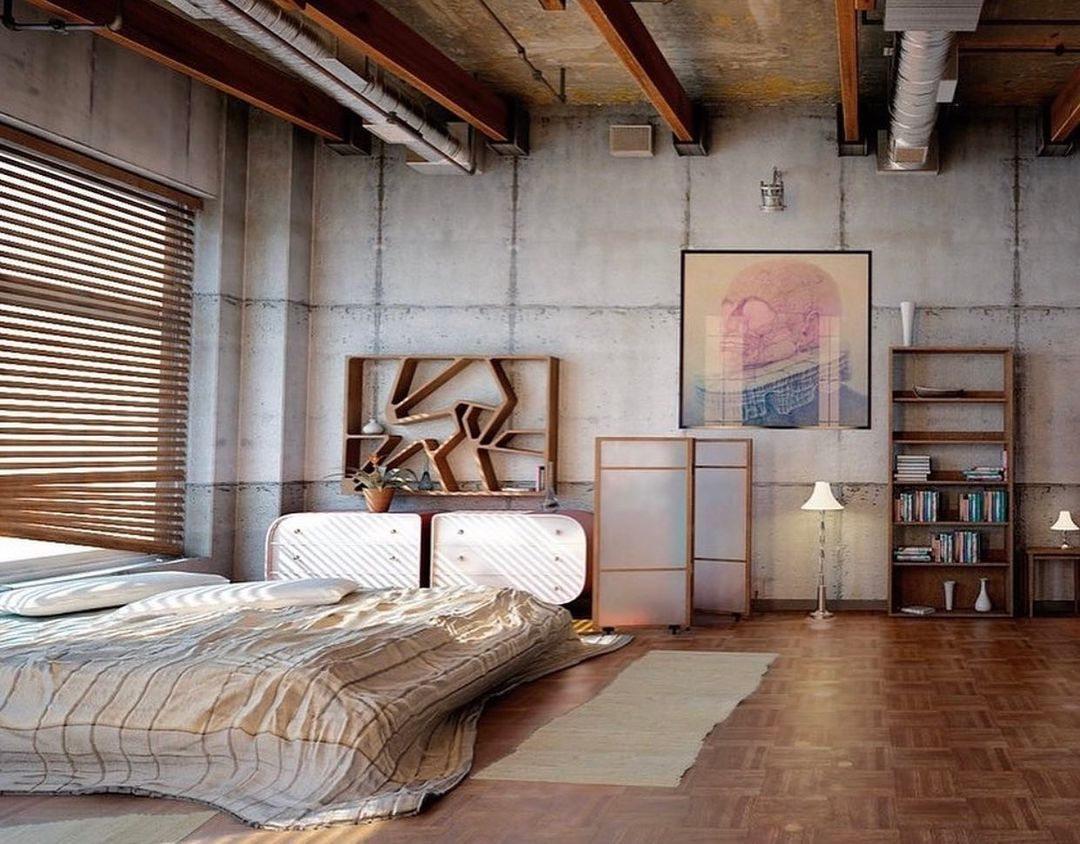
This bedroom, which exhibits pipes on the ceiling, looks more natural and adds an edgier impression to the room. Combined with wooden beams, this is able to give this bedroom a rustic design. Exposed Pipes from @walkinneverland

Distressed pipe applied to this bedroom wall produces an interesting pattern. Distressed concrete walls will also balance the look of this industrial bedroom. Industrial Pipe Bedroom from @mywarehousehome
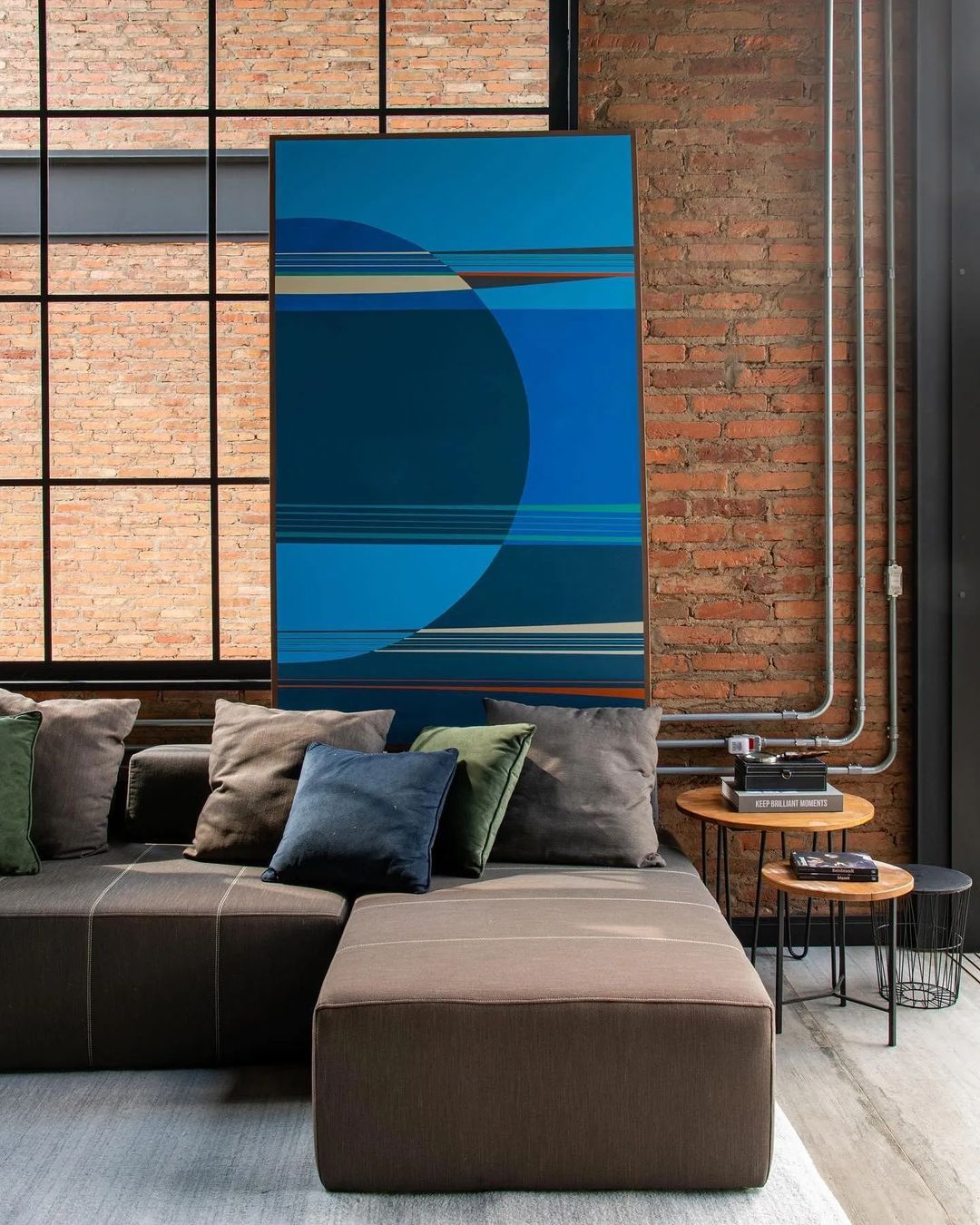
The addition of a pipe to the living room wall adds a beautiful design that you can try now. This design is a simple decoration that you can try to enhance the appearance of this house. Industrial Pipe Wall Artz from @architecturesight

This large pipe in the industrial kitchen is able to steal the eyes of everyone who comes. Placing this pipe on the kitchen ceiling makes a perfect design. Industrial Pipes Kitchen from @loft.design.inspiration
Bare brick walls
Modern architecture uses a variety of materials to create its structures. These materials are often found in nature, but can also be created through technological processes. The material that most commonly makes up a modern structure is concrete. It is a composite material that is composed of cement and aggregates in a specific ratio. It is durable and strong, but can also be made into many different shapes. Another material used in modern architecture is wood. This material is usually stained to give it a unique color and texture.
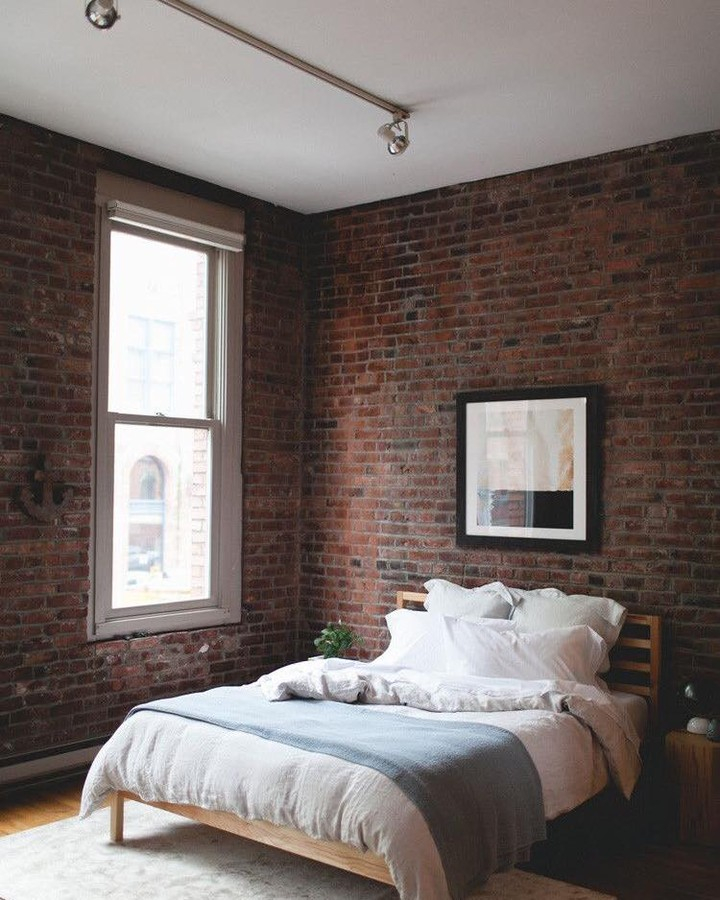
This brick wall bedroom adds an aesthetic touch to this year’s industrial decor. This exposed brick wall is also able to give your home an attractive and rustic appearance. Brick Wall bedroom from @74decor
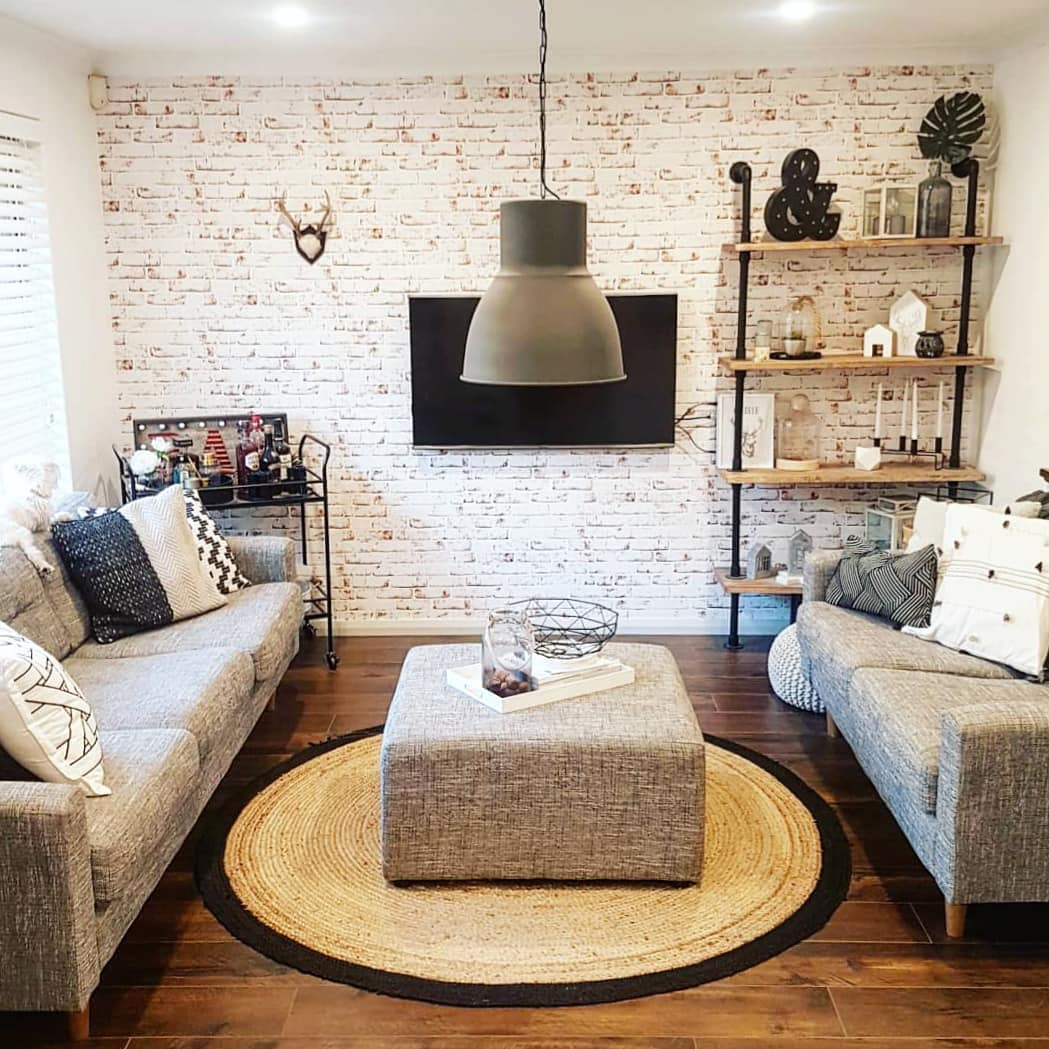
This white brick wall is able to give the appearance of a perfect rustic room. Wood and pipe accents on this shelf also manage to give the living room a charming look. White Brick Wall and Wood Accent from @ourlittleredbrickhome
Exposed concrete
Exposed concrete is a popular choice for homeowners looking to add an industrial style to their homes. It is a versatile material that can be used in a variety of ways to create unique designs for your home, and it offers many benefits. It is durable and can withstand the elements, which makes it a good option for areas that receive heavy traffic. It also requires little maintenance and can last for 40 years or more.
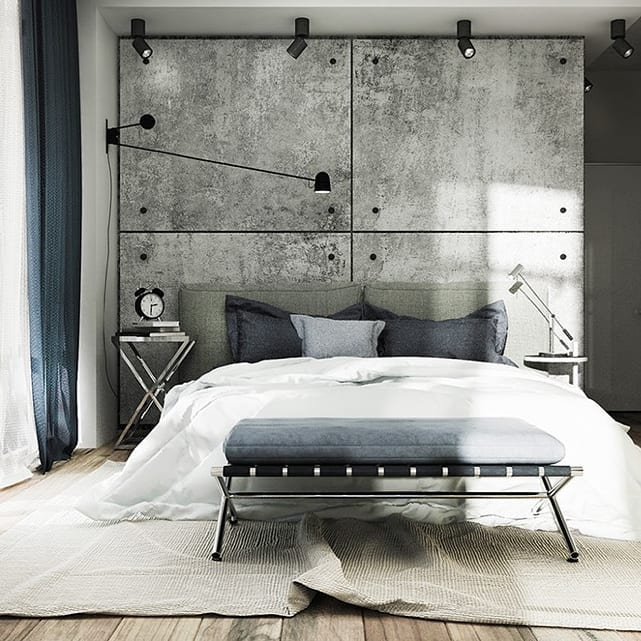
This exposed concrete looks popular in your industrial bedroom design. This concrete requires little maintenance and can last for 40 years or more. This unique design is able to steal the attention of everyone who comes. Industrial Concrete Wall Bedroom from @designingyourhome
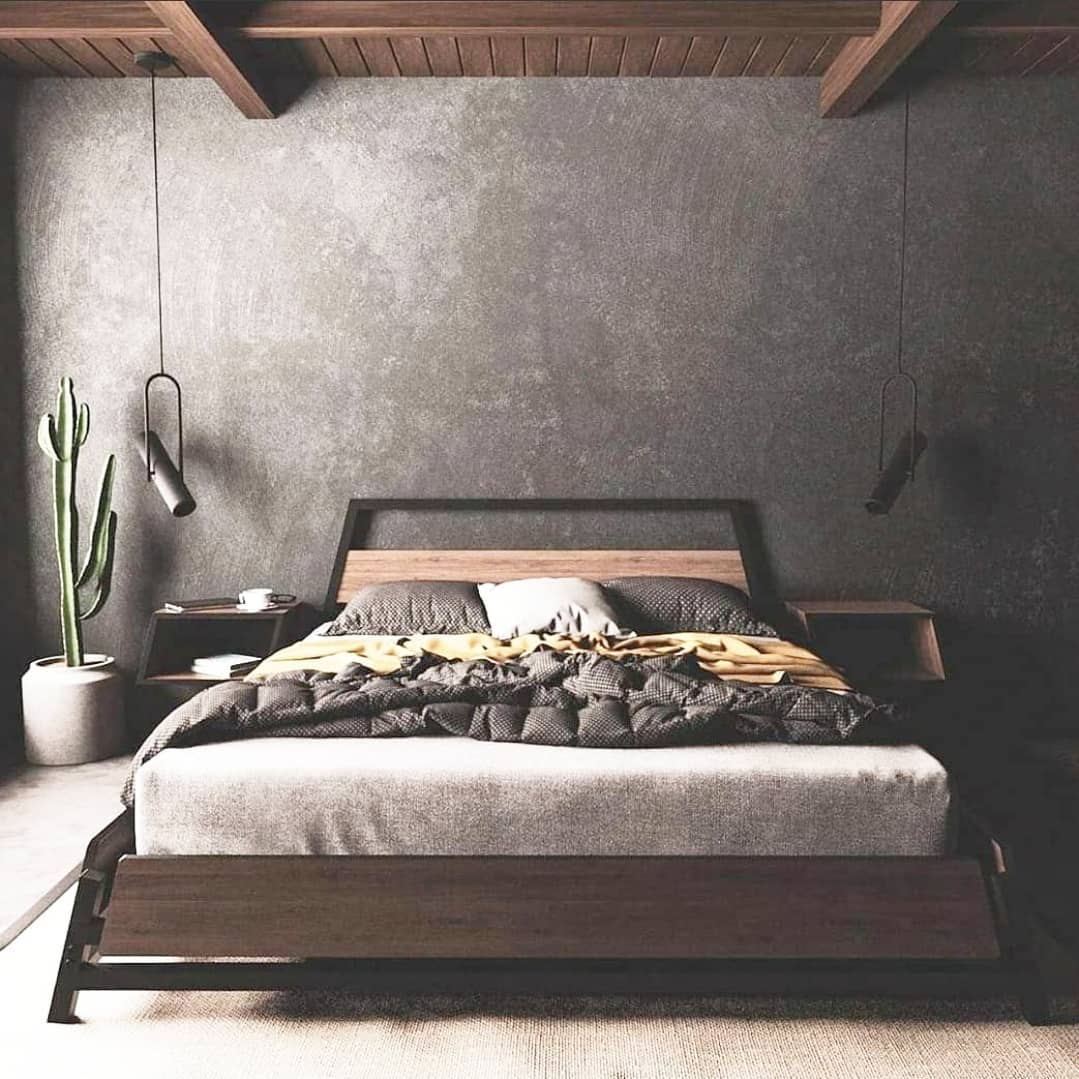
This industrial bedroom features a distressed concrete accent wall that will offer many benefits. This concrete material will last a long time and will offer a perfect home design. Exposed Concrete Wall from @sabino.mx
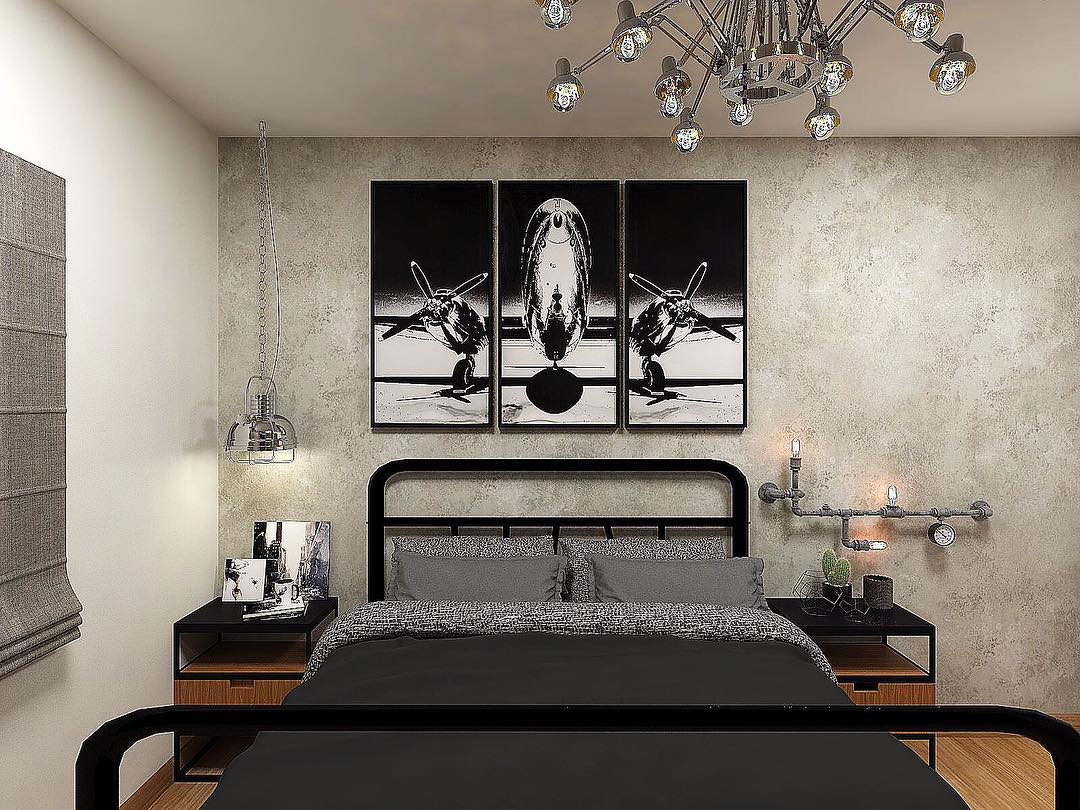
Concrete offers many benefits to your industrial home design. It offers an industrial style and a perfect look for your home decor. This black and white wall decoration is also able to complement the attractive appearance of your home. Concrete Wall from @nubiaprocopiointeriores
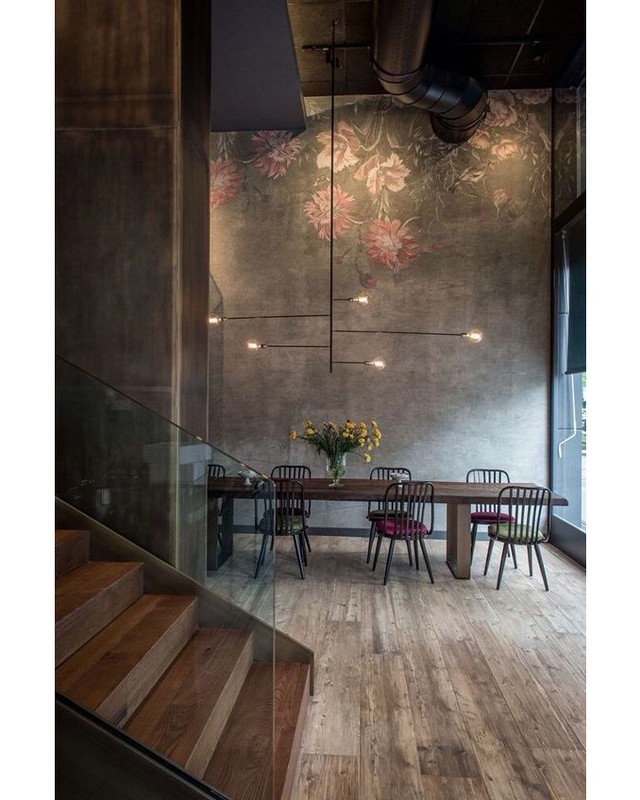
This concrete dining room has been painted to give it a unique look. This material has a perfect look and a perfect look. It is durable and can withstand the elements, which makes it a good choice for areas that receive heavy traffic. Concrete Paint Wall Decor from @homeadore
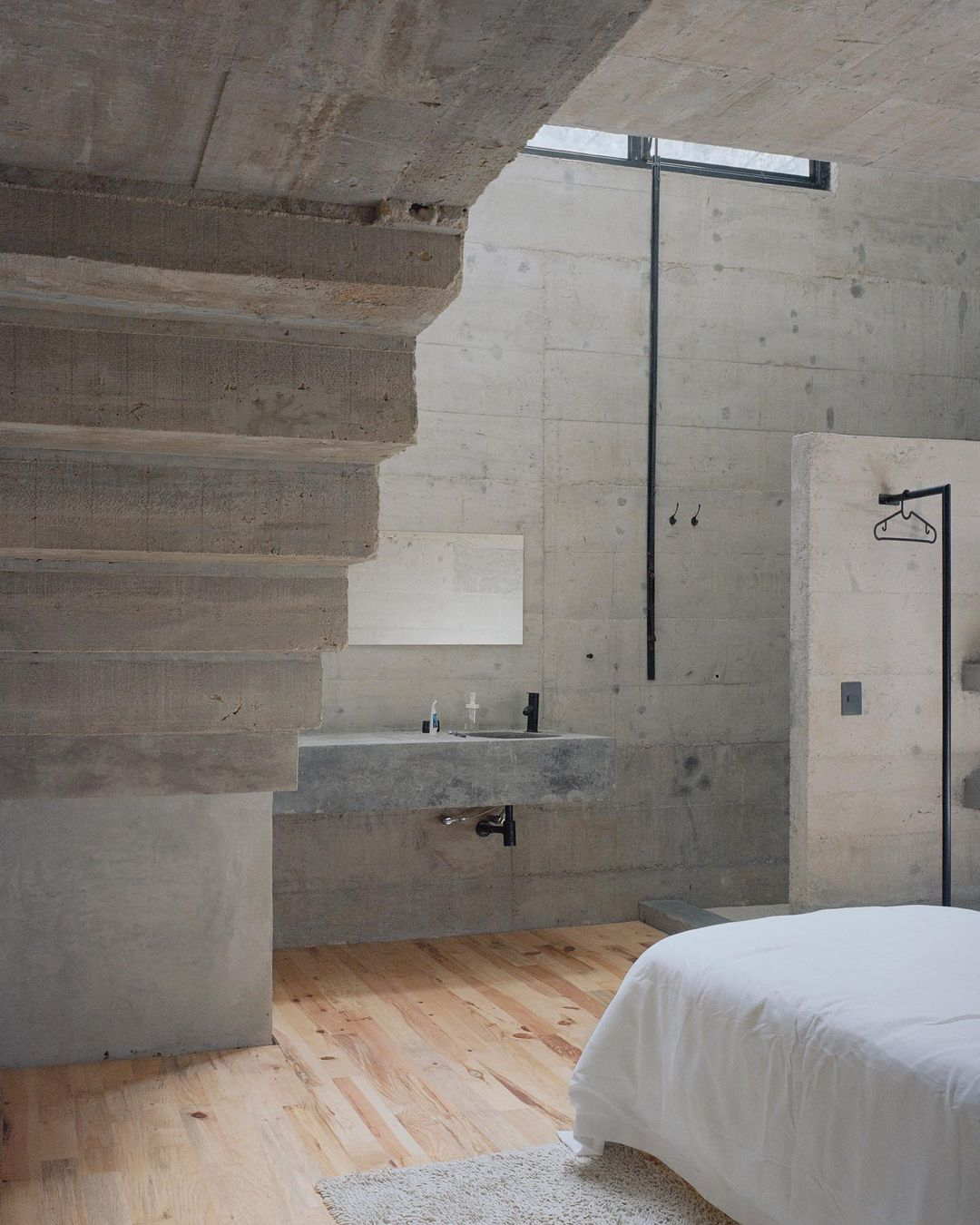
This white concrete bathroom wall successfully offers a charming industrial design. Although they require more maintenance, these walls give a strong and sturdy appearance. White Concrete Wall from @industrialkonzept
Exposed beams
Exposed beams are the perfect way to add a hint of industrial style into your home. They are great for bringing the raw edge to posh urban decorating schemes and ultra-modern interiors. They can be painted or left with their stains on show to reflect the building’s history and adventures. They can be used as a focal point or can be paired with other elements in the room like stone flooring or stone wall panels.
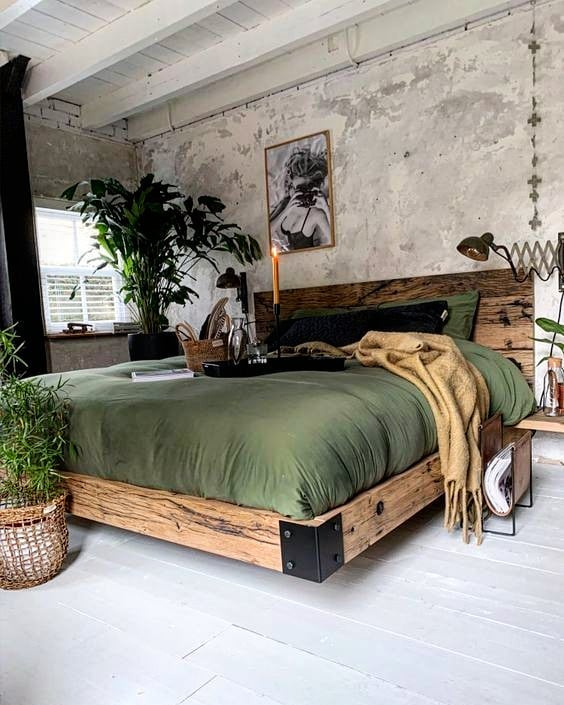
The touch of wood beams applied to the bed frame can give a natural impression to this bedroom. This bed accent can be a focal point and a solid look. Wood Beam Bed Frame from @interestingcreativedesigns
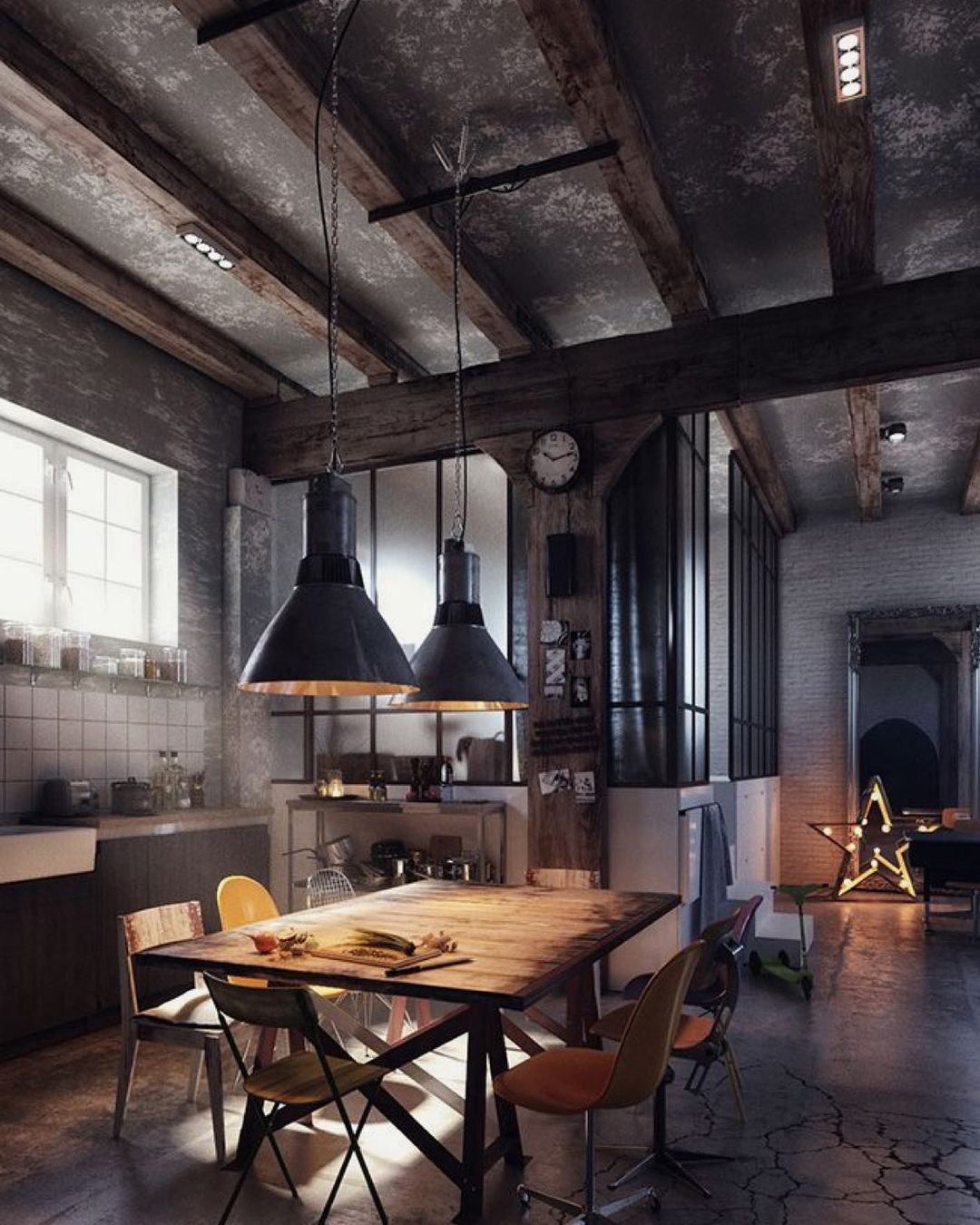
These wood accent accents are great for bringing a raw side to luxury urban decor schemes and ultra-modern interiors. The application of wooden beams to this ceiling can be a focal point or can be paired with other elements. Industrial Beam Ceiling from @digi.channel
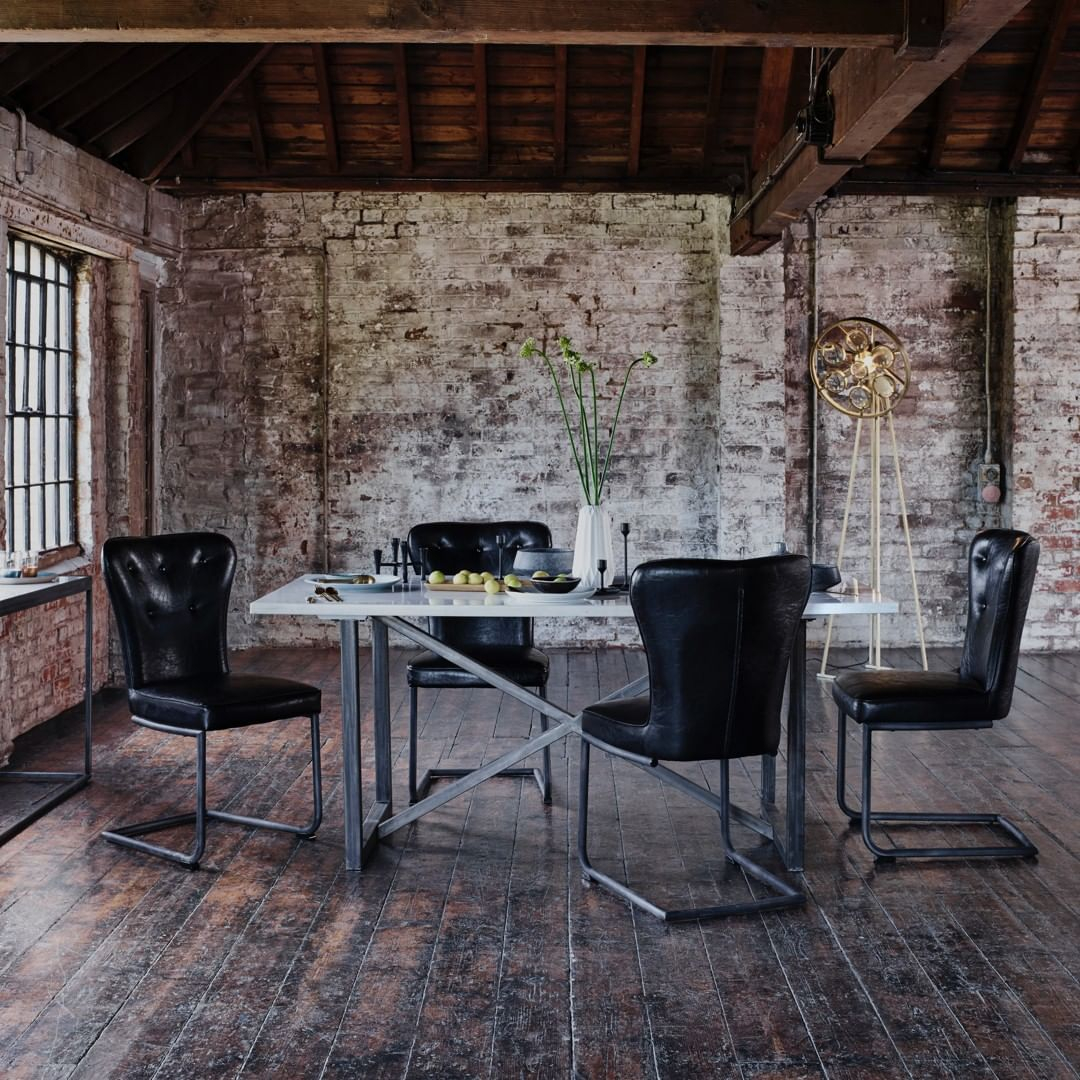
This industrial rustic house design has a natural touch to the ceiling. Using materials from wood beams can provide an attractive home design and will present a raw side. Industrial Rustic Design from @furniturevillage
Industrial lighting
Industrial lighting is one of the key elements to creating an industrial interior design. Designed for functionality, these lights can be simple or dramatic depending on your design vision. A popular choice is the exposed bulb style – these are perfect for creating that industrial vibe! These bulbs can be used as a standalone light, under lampshades or even as a chandelier. They’re also available in a range of shapes and sizes. They’re an excellent choice for accenting a room with a bold industrial vibe and are great for bringing in on-trend style too!
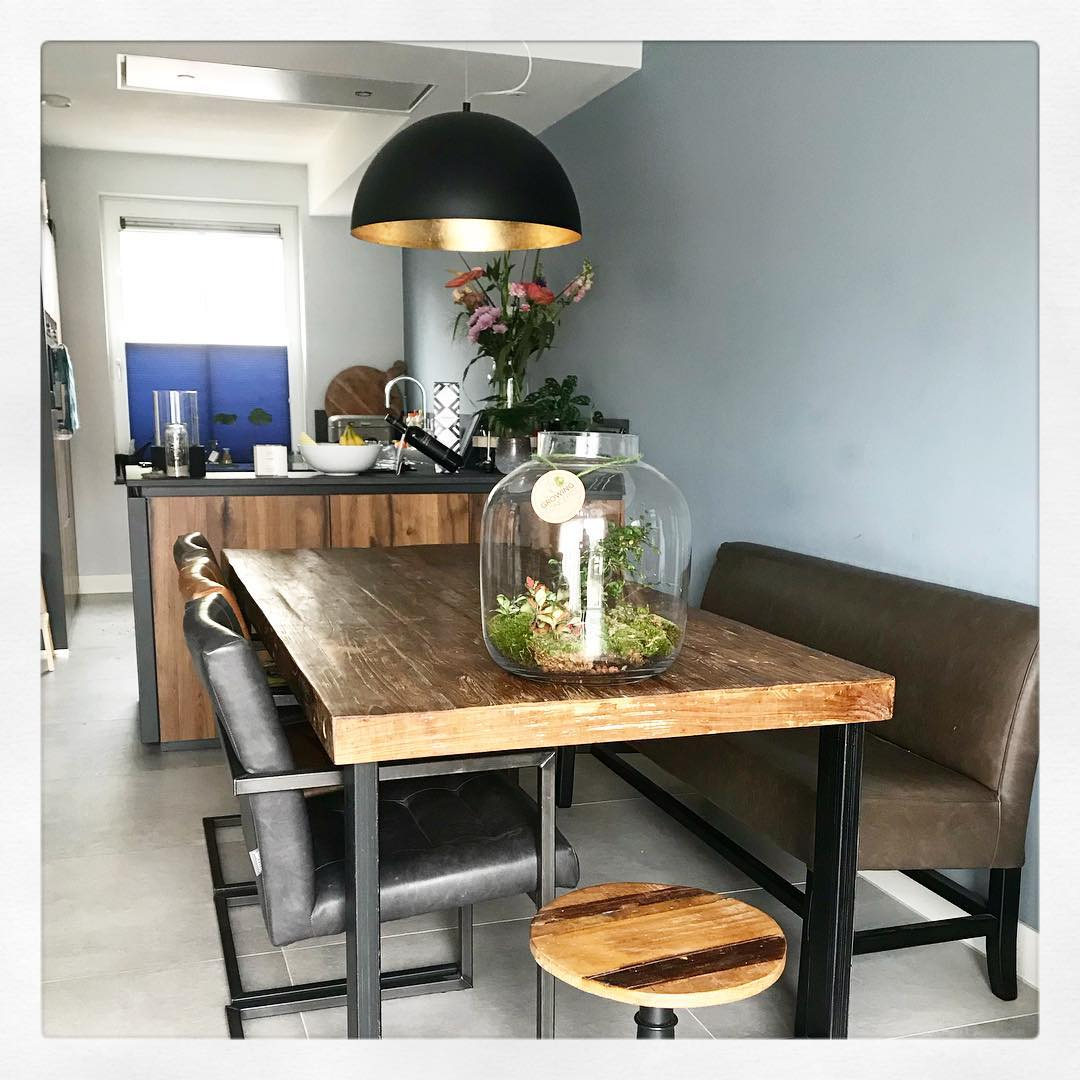
Integrate a metal pendant lamp into your industrial dining room decor. This lamp is a suitable lighting lamp placed in the decoration of this industrial dining room. Having black and yellow colors can give a perfect appearance. Black Pendant Light from @home_of_loesje

Apart from its attractive appearance, this industrial chandelier also gives a vintage impression to your industrial bedroom decor. This lamp provides a bright and steady light making it perfect for this bedroom. Its trendy appearance makes this lamp much loved by the public. Industial Pendant Light from @coreinex

Industrial farmhouse lamps are lamps that have a luxurious rustic touch. You can hang this chandelier in your industrial dining room decoration. Having this yellow light successfully gives the impression of a dramatic room. Industrial Farmhouse Light from @teampreece
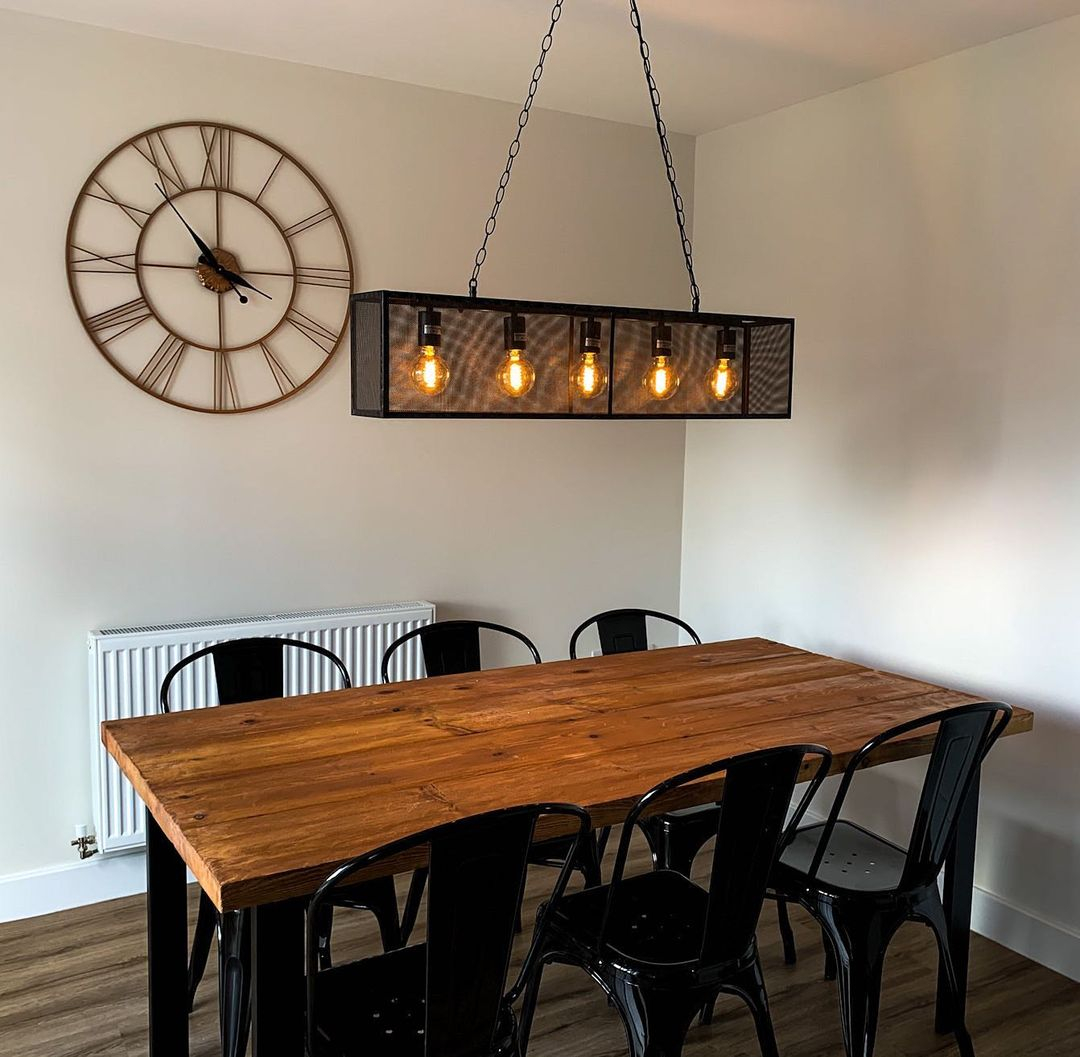
This pendant lamp is unique because it is equipped with a wire box that will give an industrial impression. In addition, this lamp also gives a strong classic and vintage impression. Using this material from bholam will also work to create dramatic lighting. Industrial Bholam Light from @ourhouseonthehillside
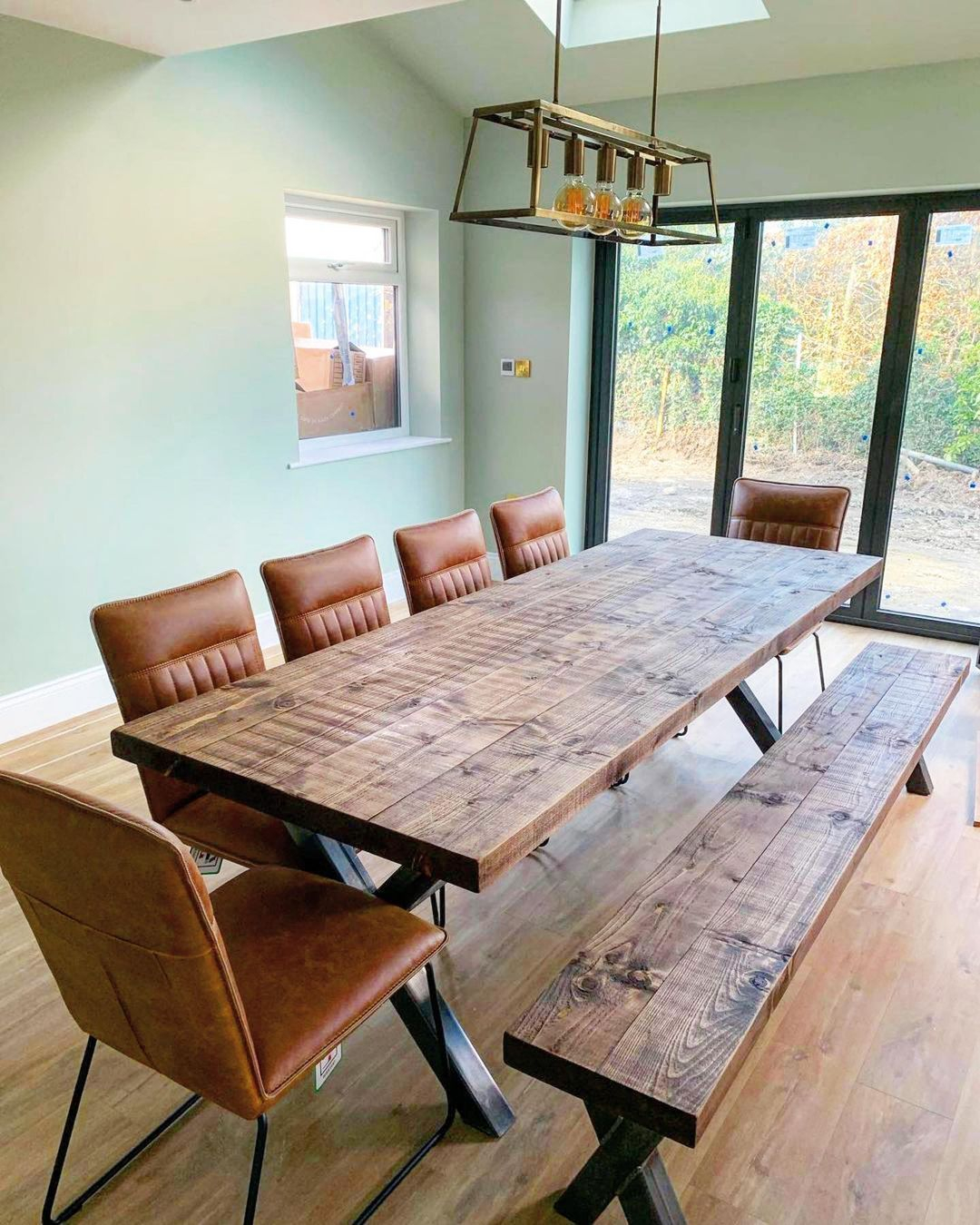
You can apply this rustic industrial lighting to the dining room. The use of this gold chandelier gives the impression of a luxurious and elegant space. Industial Rustic Lighting from @rccfurniture
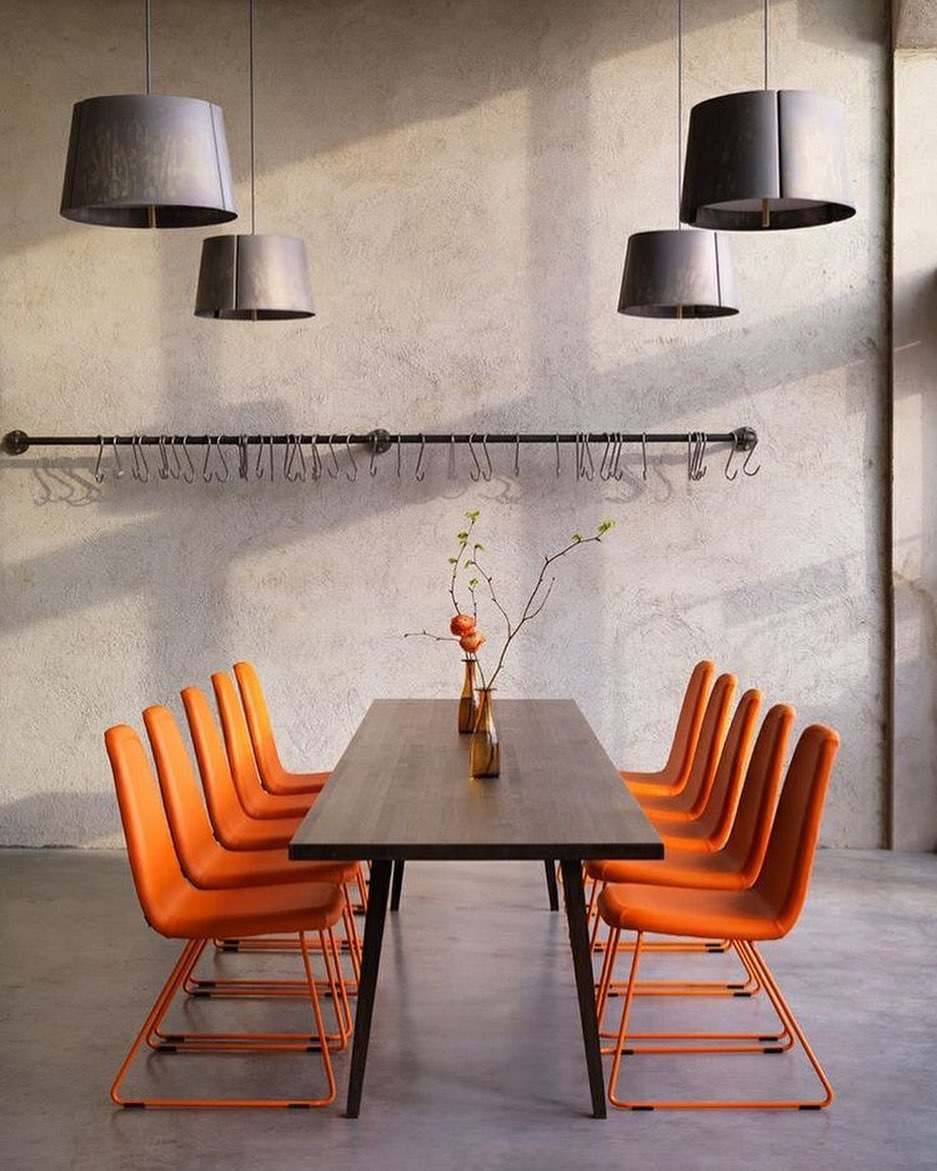
This metal pendant succeeds in giving the dining room an attractive appearance and is able to steal the eye. Applying four chandeliers will provide perfect lighting and a charming appearance. Metal Pendant Light from @tsnuq
Vintage Pieces
Vintage pieces are an excellent way to add a touch of personality to your industrial interior designs. They come in a variety of colors and textures and are often used to create an authentic look. A vintage trunk, repurposed into a coffee table, is another great way to incorporate an industrial style into your home. This rustic industrial design is perfect for a home with high ceilings and big windows. You can easily achieve a vintage industrial style with the right accessories and pieces. Just add a few details, such as a retro sofa and a mid-century modern floor lamp, to give your space an authentic look.
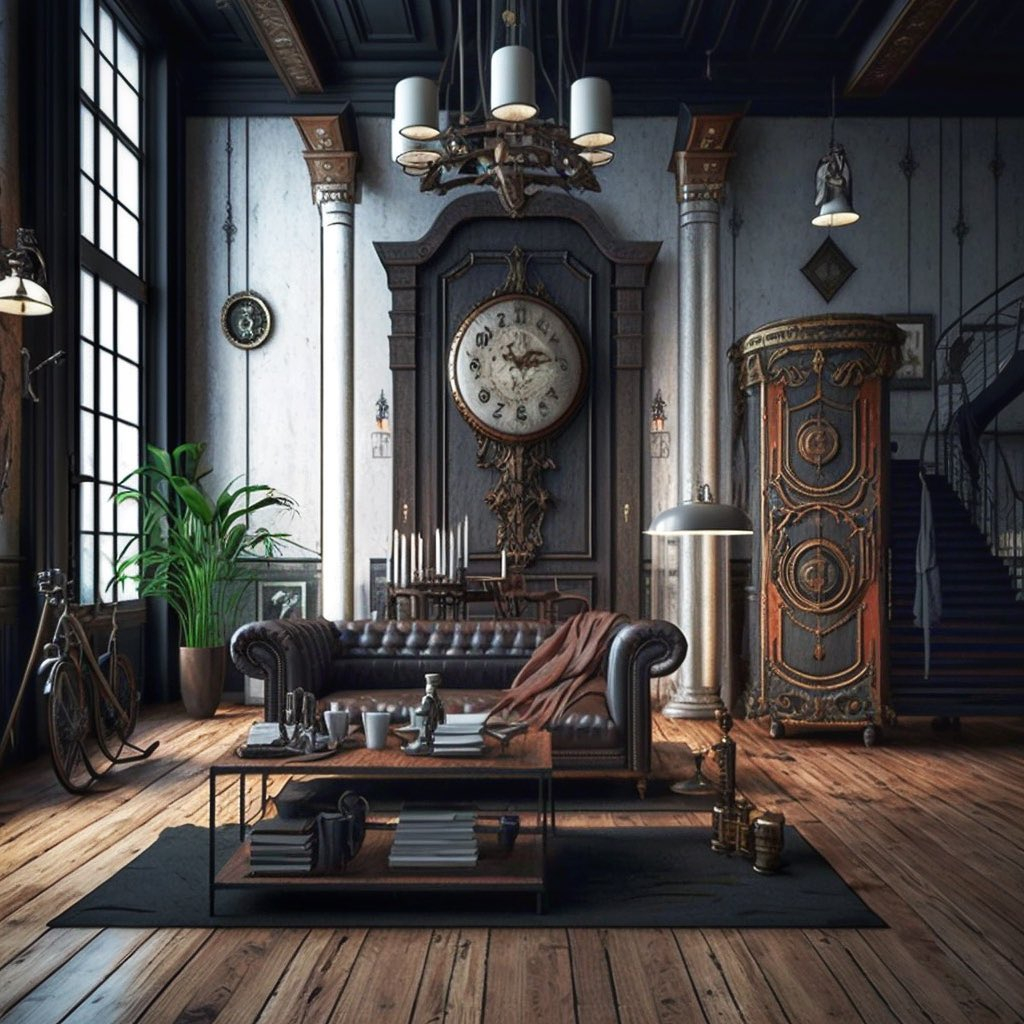
You can give a vintage touch in industrial style to your home. You can expect a vintage buffet to give your place an authentic look. Vintage Buffet from @curiousjamesp
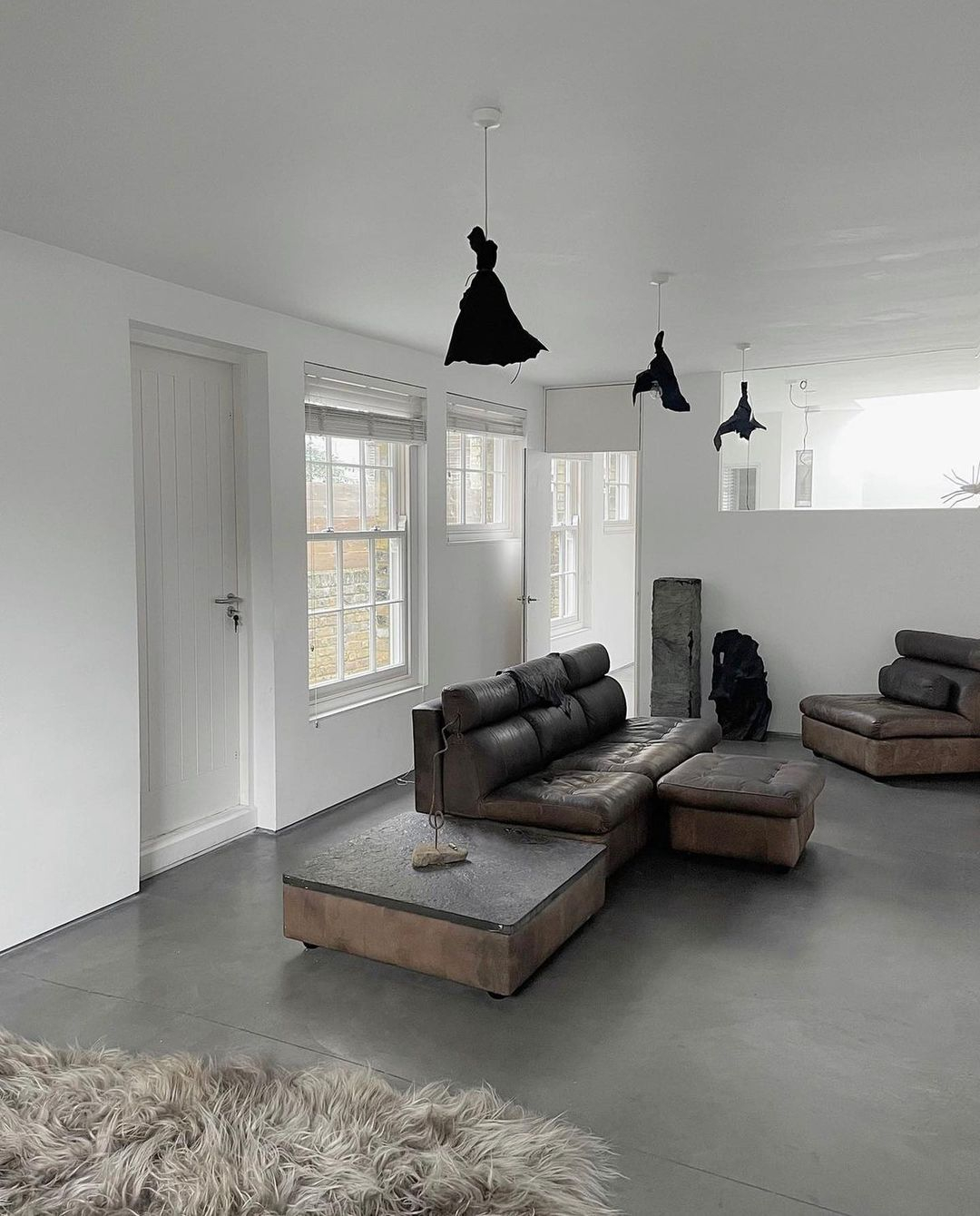
This vintage seating area adds a unique look to your industrial home. Made of wood, it will also add a natural touch and extra comfort to your home. Vintage Sitting Area from @industrialkonzept
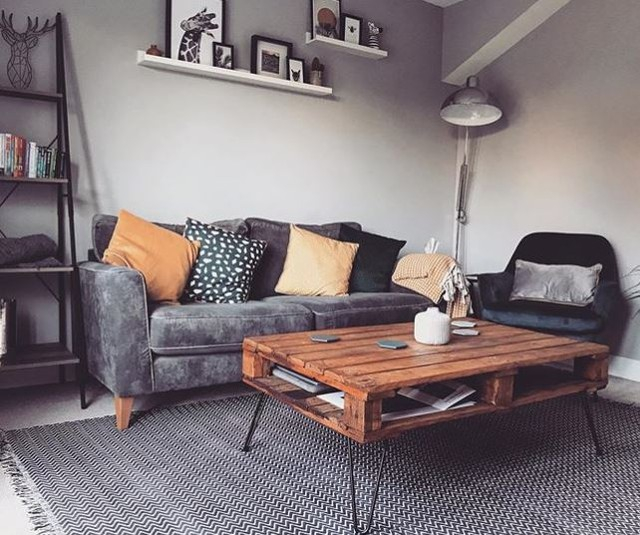
This reclaimed crates coffee table complete with wheels gives your industrial living room a vintage piece of furniture. Wooden Crate Coffee Table from @furniturevillage
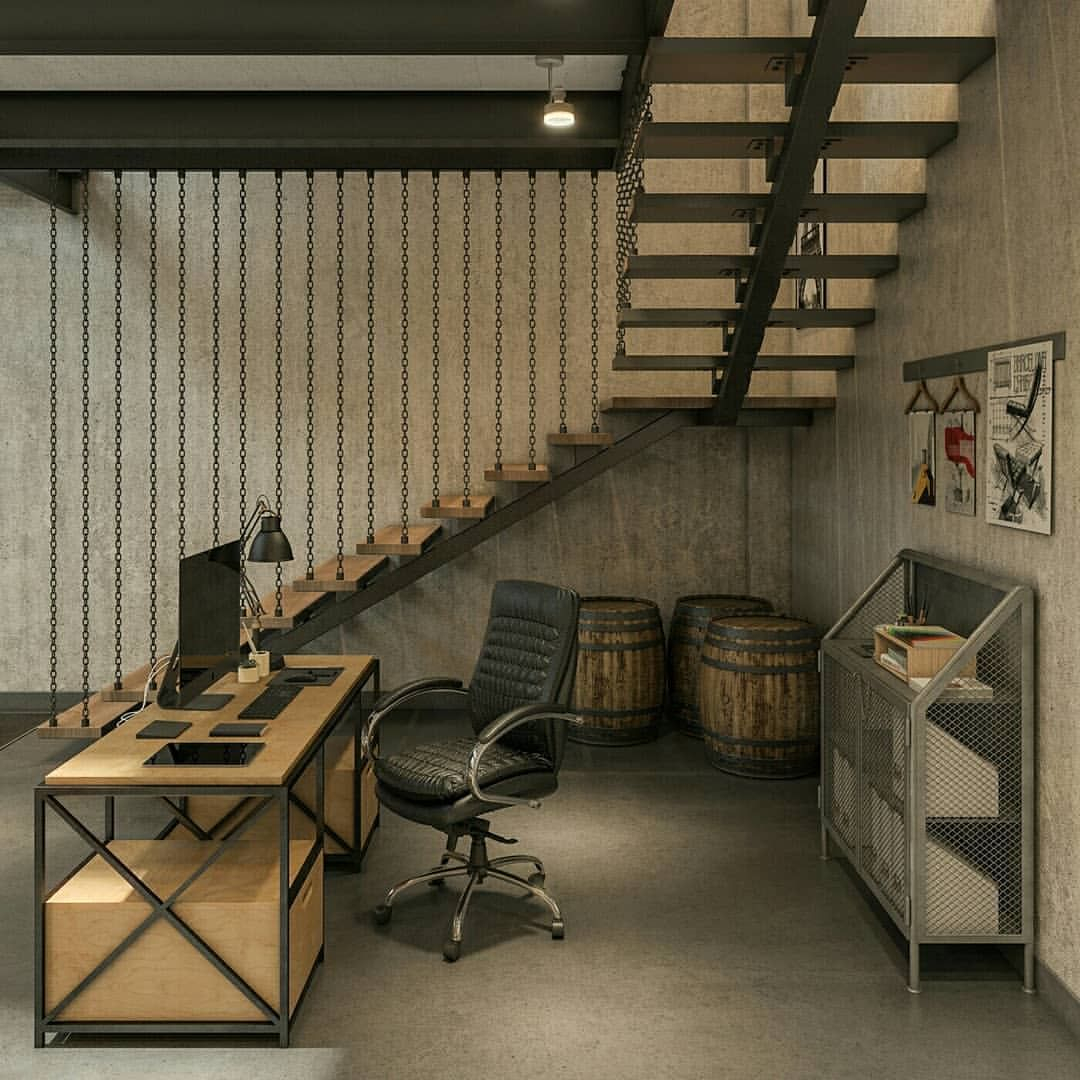
An antique ornament in the form of a wine barrel placed in a corner of this industrial office is able to present a perfect home design. Apart from that, the wooden accents on this piece of furniture are also able to provide an interesting home office design for you to try. Vintage Wine Barrel Ornament from @loft.design.inspiration


